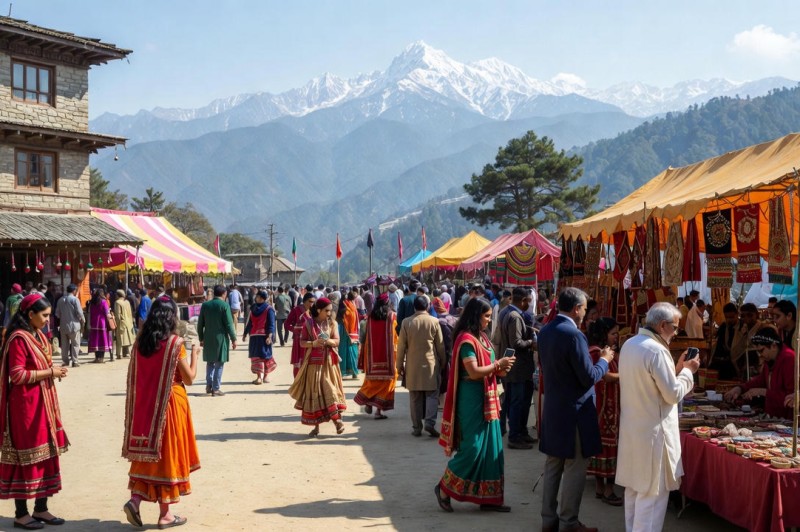

Lord Shiva, the supreme deity of the Hindu trinity, is often depicted as the destroyer and transformer. Within the vast tapestry of Hindu mythology, Lord Shiva has taken numerous avatars to fulfill different cosmic roles and bless his devotees. Let's delve into some of the notable incarnations of Lord Shiva, each with its unique attributes and significance.
Although descriptions of Lord Shiva's avatars are found scattered throughout the Puranas, the Shaiva tradition neither universally acknowledges all these incarnations nor aligns on a specific count. The Linga Purana mentions several avatars of Lord Shiva. There are numerous avatars attributed to Lord Shiva, with nineteen considered significant. They are as follows -:
1. Veerabhadra:
Veerabhadra is a fierce and formidable form of Lord Shiva, created from a lock of his hair. He manifested to avenge the death of Goddess Sati and to punish Daksha, her father, for disrespecting Shiva.
2. Pippalada:
Pippalada is considered an ancient sage and an incarnation of Lord Shiva. He is associated with the Pippalada School of Atharvaveda and is revered for his wisdom and teachings.
3. Nandi:
Nandi, the divine bull, is not just Lord Shiva's mount but is also considered an incarnation of Shiva himself. Nandi is a symbol of loyalty, strength, and righteousness.
4. Bhairava:
Bhairava is a fierce and wrathful form of Lord Shiva associated with annihilation. He is often worshipped for protection and is considered the guardian of Mata Shakit Peeth sacred sites.
5. Sharabha:
Sharabha is a mythical creature, part-lion and part-bird, assumed by Lord Shiva to subdue the fierce form of Lord Narasimha. This form represents Shiva's supremacy over all divine manifestations.
6. Grihapati:
Grihapati is a compassionate form of Lord Shiva as the protector of households. Devotees seek his blessings for domestic harmony and well-being.
7. Durvasa:
Durvasa, a renowned sage known for his short temper, is believed to be an incarnation of Lord Shiva. Despite his irritable nature, Durvasa is revered for his knowledge and penance.
8. Hanuman:
Hanuman, the devoted disciple of Lord Rama, is also considered an avatar of Lord Shiva. His unwavering devotion and unparalleled strength make him one of the most revered deities in Hinduism.
9. Vrishabha:
Vrishabha, meaning 'bull' in Sanskrit, represents Lord Shiva in his bovine form. This gentle manifestation symbolizes fertility, strength, and purity.
10. Yetinath:
Yetinath is a manifestation of Lord Shiva associated with the mythical beings known as Yaksas. Yetinath is worshipped for protection and auspiciousness.
11. Avadhoot:
Avadhoot is an ascetic and wandering form of Lord Shiva, emphasizing detachment from worldly desires. This avatar guides seekers on the path of spiritual liberation.
12. Sureshwara:
Sureshwara is an incarnation of Lord Shiva known for his benevolence and grace. Devotees seek his blessings for wisdom, knowledge, and spiritual enlightenment.
13. Kirata:
In the Kirata form, Lord Shiva appears as a hunter. This avatar is associated with the legendary encounter between Lord Shiva and Lord Arjuna.
14. Yaksha:
Yaksha is a celestial being and an incarnation of Lord Shiva, often worshipped for protection and prosperity.
15. Sunatnartaka:
Sunatnartaka, meaning 'the graceful dancer,' is the cosmic dancer form of Lord Shiva, symbolizing the rhythmic cycles of creation and destruction.
16. Brahmachari:
Brahmachari represents Lord Shiva in his ascetic form, emphasizing celibacy, penance, and meditation.
17. Bhikshuveerya:
Bhikshuveerya is the beggar incarnation of Lord Shiva, emphasizing humility and simplicity in seeking alms.
18. Ashwatthama:
Ashwatthama, a character from the Mahabharata, is believed to be an immortal and an incarnation of Lord Shiva. He is often associated with martial prowess.
19. Gorakhnath:
Gorakhnath is considered to be an incarnation of Lord Shiva and he is considered a Guru by the King of Gorakhpur, Maharaj Apti Narayan. Gorakhnath is called the Nath of Gorakhpur and is considered the epitome of yogis and seekers.
20. Nataraja:
Nataraja is a unique form of Lord Shiva who is depicted performing dance (Tandava). In this form, Shiva destroys Brahma's creation and begins a new creation.
21. Khandoba:
Khandoba is the presiding deity of the state of Maharashtra and is considered an incarnation of Lord Shiva. Khandoba is linked with the history of brave Shivaji and is called 'Jai Malhar'.
These diverse avatars showcase the multifaceted nature of Lord Shiva, each serving a specific purpose in maintaining cosmic balance and guiding devotees on their spiritual journey. Devotees revere and worship these manifestations, seeking blessings for various aspects of life and spiritual evolution. The divine incarnations of Lord Shiva continue to inspire awe and reverence among millions, encapsulating the boundless facets of the divine within Hindu cosmology.